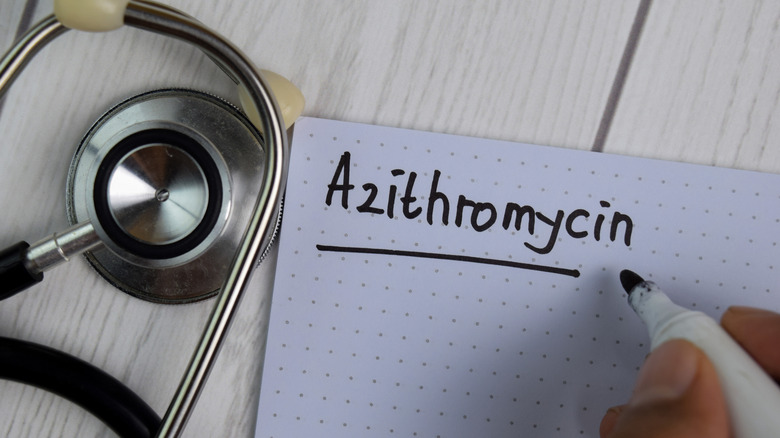What Is Donovanosis And Should You Be Worried About It?
Donovanosis is a "flesh-eating" sexually transmitted infection (STI) characterized by the bacteria that damage skin tissue. It is similar to the flesh-eating bacterial infection known as necrotising fasciitis, and health experts are now seeing an increased number of cases in the United Kingdom, according to Men's Health.
Diagnoses of this rare genital disease are often found within communities living in tropical climates, such as southern India and Papua New Guinea (via Osmosis). Most common in those ages 20-40, the main symptom of donovanosis is the gradual development of ulcers along the groin, genitals, and anus. While not generally painful, bleeding often accompanies the ulcers.
Most often spread through unprotected sexual intercourse, in some cases, donovanosis can also be contracted through direct skin contact or exposure to contaminated fecal matter, according to Osmosis. Cases have been on the rise since 2016, according to Public Health England, leading it to become more common (via Men's Health).
Treatment for donovanosis
Showing an upward trend, reports from Public Health England reveal that the number of cases has increased in the U.K. from 19 in 2016, to 30 reported cases in 2019 (via Forbes). A decrease in cases was seen in 2020 due to the social distancing measures put in place during the onset of the COVID-19 pandemic. However, medical experts still highlight the importance of seeking immediate treatment if exposed to or infected with the disease's Klebsiella granulomatis bacteria. It's important to note, however, that overall, the number of cases detected in both the U.K. and the U.S. are considered minimal.
According to Osmosis, symptoms generally emerge a few weeks after infection. Depending on the type of infection, additional donovanosis symptoms can include the appearance of swollen red bumps, scarring, and foul odor. Because the infection can spread to other areas of the body, including the bones and liver, it's important to seek prompt medical treatment in order to avoid potential permanent damage.
Treatment for donovanosis involves a prescription for antibiotic medication (via Men's Health). In the event that symptoms reemerge, usually between 6-18 months after the first infection, surgery is often needed to do away with any remaining scar tissue. Because donovanosis can increase one's chance of contracting HIV, utilizing a method of protection, such as condoms, can help keep you and your partner safe and healthy.


